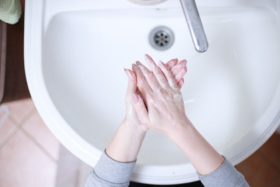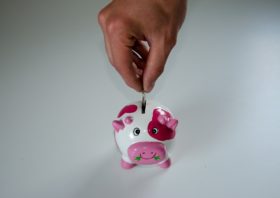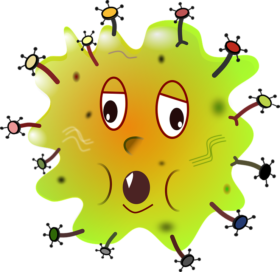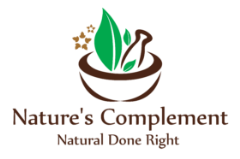
With the recent outbreak of another infectious virus, and the expanded coverage of the spread as it is unfolding, it seems basic supplies such as hand sanitizer are sold out in many stores. But making your own hand sanitizer is easier than pie. Literally.
Hand Washing – First Line of Defense
First off, do you even need hand sanitizer? If proper hand washing procedures are used, then technically you should not need to sanitize your hands. By proper hand washing procedures, we mean what the CDC recommends, which is as follows (from the CDC):
Follow these five steps every time:
- Wet your hands with clean, running water (warm or cold), turn off the tap, and apply soap.
- Lather your hands by rubbing them together with the soap. Lather the backs of your hands, between your fingers, and under your nails.
- Scrub your hands for at least 20 seconds. Need a timer? Hum the “Happy Birthday” song from beginning to end twice.
- Rinse your hands well under clean, running water.
- Dry your hands using a clean towel or air dry them.
We would like to add step 6: If using a public restroom, use the paper towel you dried your hands with to turn off the faucet, and to open the restroom door when leaving. (And shame on public bathrooms that only offer hand drying machines and no towels. Those places think they’re saving trees, but they’re likely spreading viruses and bacteria through the air dryers!).
So in these situations where a public restroom doesn’t offer or is out of certain resources, or there is no place that allows you to wash your hands, then your hand sanitizer becomes essential.

A DIY homemade one is great for three reasons:
- You don’t have to worry about stores being depleted of hand sanitizer during pandemics, or during supply chain interruptions.
- You know what’s in it, no questionable ingredients. You can even add your favorite essential oils for scent (please note the WHO does not recommend adding scents).
- You save money. You can make quite a bit of a homemade hand sanitizer for a fraction of the cost of what you would pay in stores.

How to Make Your Own Handrub Formulation
The World Health Organization (WHO) offers two recipes on their site. It’s not “hand sanitizer” as some of us know it, but they refer to it as handrub formulation. The two formulas are fairly close in consistency, and only differ by type of alcohol used, and thus the percentage required of the alcohol. Below are the same formulas but scaled down to a person using the formula at home rather than a local commercial producer.
Formulation 1:
- 80% of formula by volume – ethanol of 95% purity such as Everclear or equivalent.
- 0.125% of formula by volume – hydrogen peroxide 3% concentration.
- 1.45% of formula by volume – glycerol of 98% (or better) purity.
- Sterile distilled or boiled cold water comprises the remainder.
For example, to make 1 liter* of hand sanitizer, you would use:
- 842 mL of 95% ethanol**
- 42 mL of 3% hydrogen peroxide
- 15 mL of glycerol
- 101 mL of sterile water (distilled or boiled)
*You can do an online conversion to convert liters or mL to a measurement type available to you, but using measurements in milliliters will yield most accurate concentration results. Please note that alcohol has a different density than water, so if you are converting measurements, convert for the correct liquid type.
**Clarification: Since the ethanol is only 95% pure, you have to use more than 800ml per 1000ml to achieve a final concentration of 80%.
Formulation 2:
- 75% of formula by volume – isopropyl alcohol of 99+% purity. (***See notes on using 91% purity isopropyl if 99% is not available.)
- 0.125% of formula by volume – hydrogen peroxide 3% concentration.
- 1.45% of formula by volume – glycerol of 98% (or better) purity.
- Sterile distilled or boiled cold water comprises the remainder.
For example, to make 1 liter of hand sanitizer, you would use:
- 758 mL of 99% isopropyl alcohol (***Most available isoproppyl is 91%. See notes below if only 91% is available.)
- 42 mL of 3% hydrogen peroxide
- 15 mL of glycerol
- 185 mL of sterile water (distilled or boiled)
***Since most isopropanol sold in the US is no more than 91% instead of the 99% described by the WHO, and 99% isopropanol is difficult to find, we are offering an adjusted formula accordingly.
Lawsuit prevention disclaimer: please note that this adjustment is based on our calculations and should only be used if the 99% pure isopropyl alcohol is not available.
- 825 mL of 91% isopropyl alcohol (only if 99% is not available)
- 42 mL of 3% hydrogen peroxide
- 15 mL of glycerol
- 118 mL of sterile water (distilled or boiled)
Mix all the ingredients together by blending, shaking, or stirring. Pour into spray bottles, wait for 72 hours, and it’s ready to use.
mL Versus Ounce
It is important to note that when measuring mLs (milliliters), you are measuring volume not weight, which means that even if your scale offers a mL unit of measure, that unit of measure will be based on the weight of water. Alcohol and water do not weigh the same, so it is important that you measure using volume. You can use syringes that are the same type as used in medical settings to measure correct volumes of different fluids, to accurately measure your ingredients for your handrub.
When Substitutions Are Acceptable, And When They Are Not
The obvious problem with formulation 1 is the need for ethanol. To purchase ethanol one must be over the age of 21, and also not reside in a “dry” country/county where hard liquor is against the law to sell/buy. Not to mention the cost of such a high grade ethanol. It can be costly depending on the availability where you are located, and it is not something that is available to purchase online (unless you are licensed). If you do use this option, the WHO recommends you need a minimum final concentration of 80% ethanol to be fully effective.
Most folks already have both isopropyl alcohol and hydrogen peroxide in their medicine cabinets. But notice the concentration of isopropyl alcohol. The concentration of the alcohol is of huge importance for proper effectiveness of your homemade hand sanitizer. Your final concentration of isopropyl alcohol cannot be less, or your hand sanitizer will not be fully effective. The WHO recommends you need a minimum final concentration of 70%-75% isopropyl alcohol to be fully effective. The problem with the WHO instructions is that in the US most isopropyl alcohol sold in stores is not 99% but 91% (or 70%).
The hydrogen peroxide is also a key ingredient. Per the WHO site, the hydrogen peroxide is “intended to help eliminate contaminating bacterial spores in the bulk solutions and excipients and is not an active substance for hand antisepsis.” We here at Nature’s Complement prefer using Food Grade Hydogen Peroxide, which is sometimes difficult to find in 3% formula.
Per the WHO website, glycerol may be substituted by another humectant, but we personally think glycerol works well. You can find a vegetable source, and it’s not too expensive.
How to Properly Use Your Handrub Formulation
Application is just as important as final concentration/formulation. Your handrub will do you no good if not applied properly. Per the WHO website (if you want pictures, you can find the pdf here):
- Apply a palmful of the product in a cupped hand and cover all surfaces.
- Rub hands palm to palm.
- Right palm over left dorsum with interlaced fingers and vice versa.
- Palm to palm with fingers interlaced.
- Backs of fingers to opposing palms with fingers interlocked.
- Rotational rubbing of left thumb clasped in right palm and vice versa.
- Rotational rubbing, backwards and forwards with clasped fingers of right hand in left palm and vice versa.
- Once dry, your hands are safe.

Stock Up On These Ingredients
Now that you have your own recipe and supplies to make your own hand sanitizer, print this out and keep it with your supply of emergency supplies so that next time another pandemic is lurking near by, you can skip the trip to the store and enjoy watching everyone else go crazy in a frenzy while you sit comfortably sipping your elderberry juice.
Not A Good Get Rich Quick Scheme
While tempting to want to offer others hand sanitizer for sale when all the store shelves are empty, we don’t recommend it, even during a pandemic.
When we looked into formulating and selling a hand sanitizer, we reviewed all the laws and regulations that are involved with it. Outside of the standard labeling requirements, additional expense has to be incurred before one can legally sell a hand sanitizer, because it falls into the category of selling an over the counter drug. Which means additional labeling requirements, production requirements, flammable disclaimers, and so on. But you also need additional equipment to test your final product, such as a Alcoholmeter for pre-production analysis, and for post-production analysis. Don’t forget proper storage containers (alcohol likes to evaporate). And most importantly, safety equipment for you, the producer. Working with such large volumes of alcohol can be dangerous, versus just making a small batch for yourself and your family.
Lastly, for anyone tempted to try it, vodka and other 80 proof (40% alcohol) beverages are definitely NOT adequate to function as a disinfectant or hand sanitizer. Don’t try it, you will likely get sick.
For Health,
Tober
Nature's Complement is a participant in the Amazon Services LLC Associates Program, an affiliate advertising program. If you purchase products on Amazon through any of our affiliate links, we get a small percentage of the transaction, at no extra cost to you. We spend a lot of time writing the articles on this site, and all this information is provided free of charge. When you use our affiliate links, you support the writing you enjoy without necessarily buying our products. (However we would appreciate if you would do that too!) Thank you for helping to support our work, however you choose to do so.
These statements have not been evaluated by the Food and Drug Administration. This information and/or products are not intended to diagnose, treat, cure or prevent any disease.


